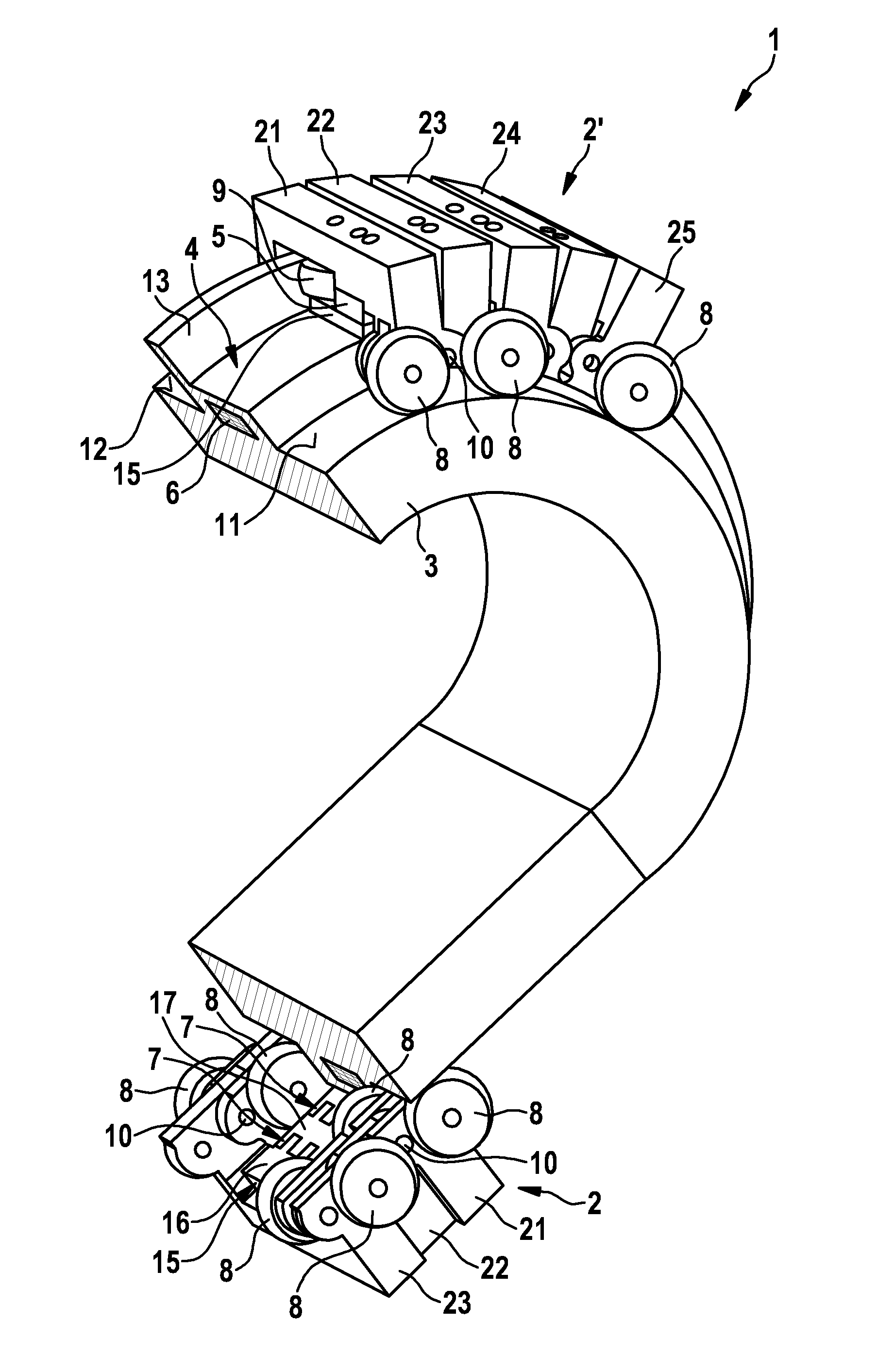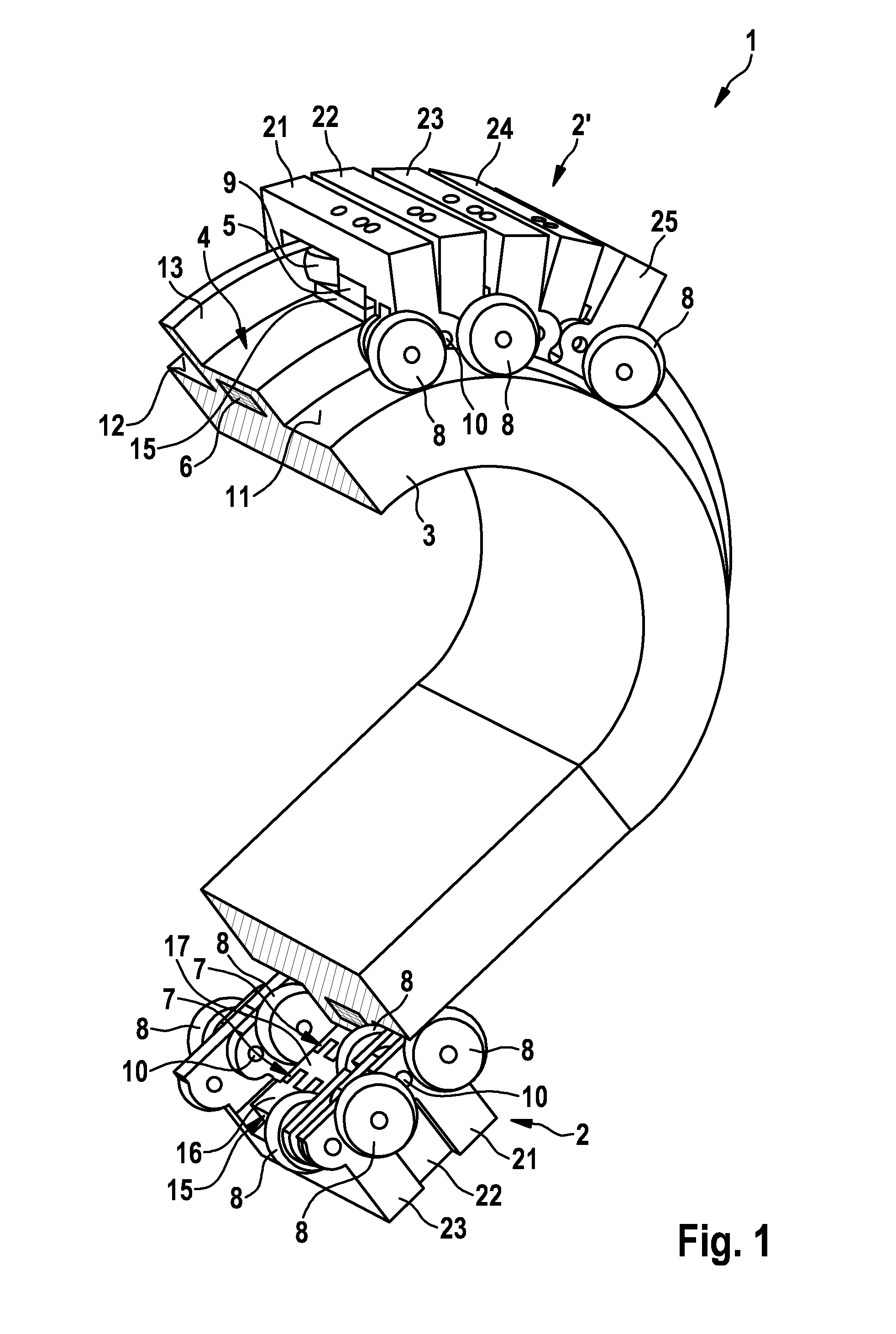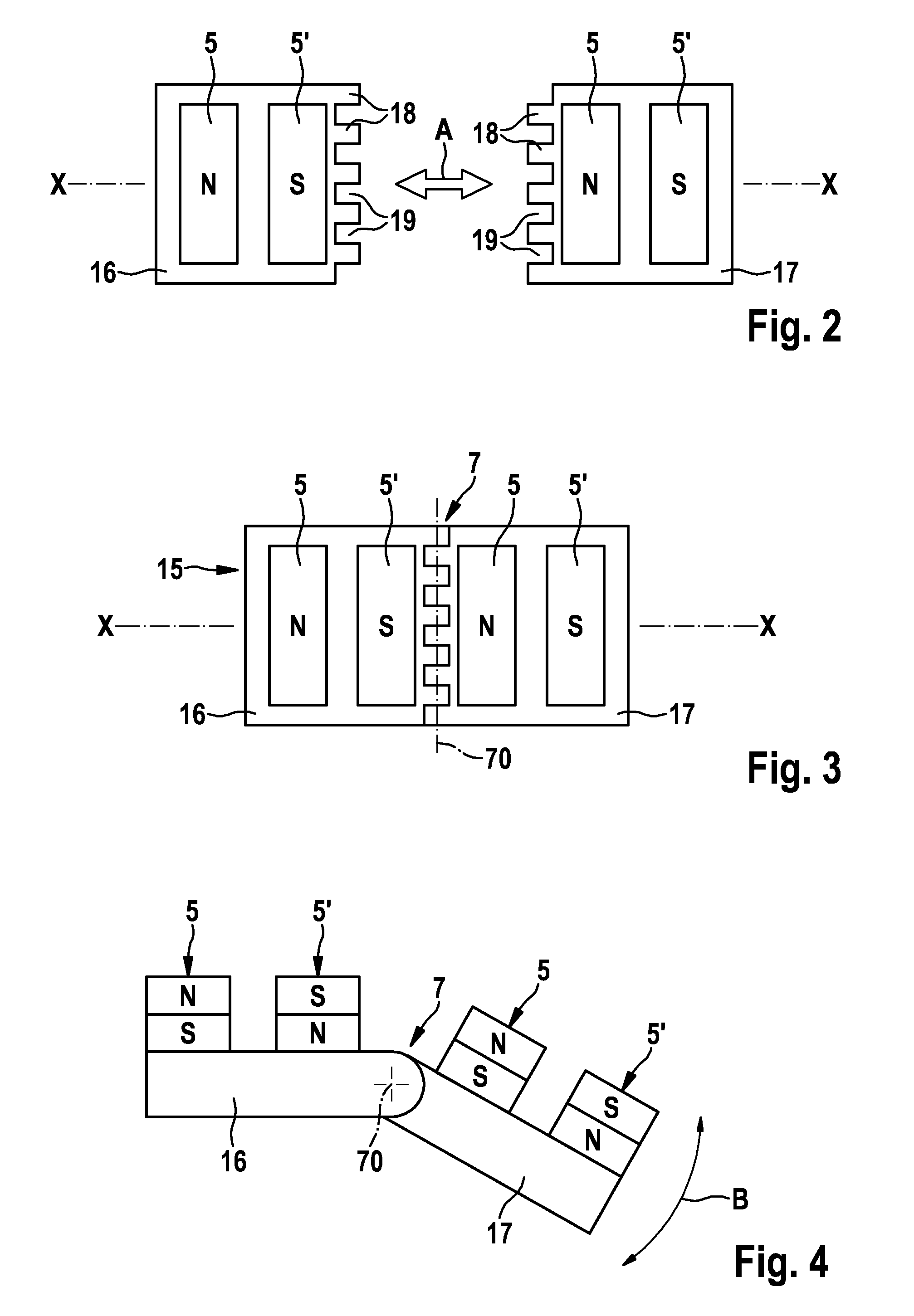Conveying device with articulated conveying element
a conveying element and conveying device technology, applied in the direction of non-mechanical conveyors, conveyors, transportation and packaging, etc., can solve the problems of iron reflux plate interruption, particularly disadvantageous in packaging technology applications, etc., and achieve the effect of reducing the radii of the curved region and small curve radii
- Summary
- Abstract
- Description
- Claims
- Application Information
AI Technical Summary
Benefits of technology
Problems solved by technology
Method used
Image
Examples
Embodiment Construction
[0017]A conveying device 1 according to a preferred exemplary embodiment of the invention is described below in detail with reference to the FIGS. 1 to 4.
[0018]As can be seen in FIG. 1, the conveying device 1 comprises a plurality of conveying elements 2, 2′ as well as a stationary and circumferentially arranged guide rail 3, which is only partially depicted. The guide rail 3 has a design comprising linear partial regions as well as curved regions so that overall an oval-shaped track results. In addition, other forms of the track, e.g. angular, are possible, which are composed of modular linear and curved elements. The guide rail 3 comprises a first track 11, a second track 12 as well as a guide bar 13 located between the two tracks.
[0019]A linear motor drive device 4 is furthermore provided which comprises a plurality of coils 6 disposed in the guide rail as well as permanent magnets disposed on the conveying element 2. In this way, a conveying device comprising a plurality of conv...
PUM
 Login to View More
Login to View More Abstract
Description
Claims
Application Information
 Login to View More
Login to View More - R&D
- Intellectual Property
- Life Sciences
- Materials
- Tech Scout
- Unparalleled Data Quality
- Higher Quality Content
- 60% Fewer Hallucinations
Browse by: Latest US Patents, China's latest patents, Technical Efficacy Thesaurus, Application Domain, Technology Topic, Popular Technical Reports.
© 2025 PatSnap. All rights reserved.Legal|Privacy policy|Modern Slavery Act Transparency Statement|Sitemap|About US| Contact US: help@patsnap.com



